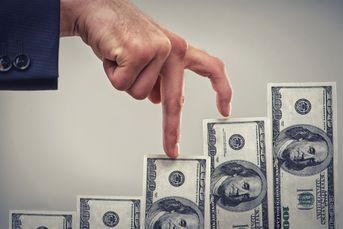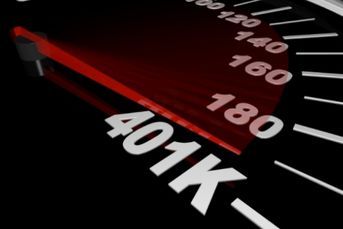Permanent — and peculiar — asset mix pushes this fund to top

Michael Cuggino’s Permanent Portfolio has been sticking with the same asset mix for almost three decades, a combination…
Michael Cuggino’s Permanent Portfolio has been sticking with the same asset mix for almost three decades, a combination of gold, silver, the Swiss franc, stocks and bonds meant to guard against inflation and recession.
For years, his fund languished while investors chased surging stock and bond markets. At the end of 2001, after stocks had rallied 17-fold over two decades, Permanent Portfolio had assets of $52 million. Now, 10 years later, the fund is beating all rivals and assets have surged to $15.6 billion.
Cuggino said the asset allocation is timeless and sticking to it can prevent investors from suffering through periods like the 1970s, when a recession, soaring inflation and the U.S. decision to abandon the gold standard made it difficult to make money with the traditional balance of stocks and bonds.
“This fund has been in the right place at the right time,” Janet Yang, a Morningstar analyst, said in a telephone interview. “The whole story here has been asset allocation.”
With gold, silver and the Swiss franc all falling from record highs, the fund’s top ranking may not last.
Cuggino, president of San Francisco-based fund adviser Pacific Heights Asset Management LLC, aims to keep 20 percent of the assets in gold, 10 percent in a blend of Swiss francs and Swiss government debt and 5 percent in silver, as well as 35 percent in bonds and 30 percent in equities of mostly U.S. companies.
The fund gained an annualized 10.5 percent in the five years ended Sept. 13, the best return among 2,153 balanced funds tracked by Chicago-based Morningstar Inc., most of which divvy their assets among stocks, fixed income and cash.
‘Predicting the Future’
Cuggino, who took over the fund in May 2003, has no plans to change Permanent Portfolio (PRPFX)’s mix.
“We don’t think human beings are good at predicting the future,” Cuggino, 48, said in a telephone interview.
The fund was started in 1982 by Terry Coxon, who co-wrote “Inflation-Proofing Your Investments: A Permanent Program That Will Protect You Against Inflation and Depression” with Harry Browne the year before, as a way to put the advice book’s theories into practice.
The goal was to use asset classes that rise and fall independently to allow investors to retain their purchasing power in any economic climate.
“We wanted a way to deal with uncertainty,” Coxon, the fund’s original manager, said in a phone interview from Santa Rosa, California, where he writes for investment publications.
Cuggino joined the fund in 1991 and was promoted to treasurer before becoming manager. He graduated from Bentley University in Waltham, Massachusetts, with a bachelor’s degree in accounting.
Trailing the Markets
Permanent Portfolio couldn’t keep pace with the bull markets for stocks of the 1980s and 1990s. The fund gained an average of 4.4 percent annually in the 10 years ended Dec. 31, 1999, compared with 18 percent for the Standard & Poor’s 500 Index, according to data compiled by Bloomberg.
The trend reversed with the 2000-2002 bear market. Permanent Portfolio averaged annual returns of 12 percent in the decade ended Aug. 31, 2011, compared with 2.7 percent for the S&P 500, a benchmark for big U.S. stocks.
Gold appreciated at a 21 percent annual clip and silver gained 26 percent a year in that period. Treasuries returned 5.5 percent a year, based on Bank of America Merrill Lynch’s Treasury Master Index. The Swiss franc more than doubled in value against the U.S. dollar, data compiled by Bloomberg show.
Bond Yields
Bonds have little room to appreciate with 10-year Treasury yields near an all-time low of about 2 percent, said Joseph Tanious, a market strategist at JPMorgan Asset Management in New York, which oversees $1.3 trillion.
“In the long run it is hard to imagine interest rates going anywhere but up,” Tanious said in a telephone interview. Bond prices fall as rates rise.
The psychology that has sent precious metals soaring could change suddenly if stocks heat up or economic data improve, said James Swanson, who helps oversee $237 billion at Boston-based MFS Investment Management.
“People may decide they don’t look so pretty,” he said in a telephone interview. “I like things that grow.”
Gains in the franc may be limited after the Swiss National Bank on Sept. 6 set a ceiling of 1.20 versus the euro, the first such move since 1978, and pledged to defend the target with unlimited currency purchases. Concerns that Europe’s debt crisis is worsening and the world economy is slowing pushed the franc to a level the bank described as massively overvalued.
“I wouldn’t expect to make money with those assets unless something bad happens,” Jack Ablin, chief investment officer at Chicago-based Harris Private Bank, said in a telephone interview. Ablin, who helps manage $55 billion, said stocks are cheap relative to earnings prospects, with the Standard & Poor’s 500 Index down 5.5 percent this year.
Investor Deposits
Half of Permanent Portfolio’s equity portion is in real estate and natural-resources companies and half is in aggressive-growth stocks, according to its website.
Diversification helped Permanent Portfolio in 2008 as it lost 8.4 percent, compared with a plunge of 37 percent for the S&P 500 Index (SPX) and 28 percent for the typical balanced fund. The fund lost money in only three other years: 1984, 1990 and 1994, Cuggino said. It rose 6.7 percent this year through Sept. 13.
The performance has caught the eye of investors. Permanent Portfolio drew $3.9 billion in net deposits in 2010 and $3.6 billion in the first seven months of 2011, Morningstar data show. BlackRock Global Allocation Fund is the only better- selling rival in the balanced category this year, according to Morningstar, with $4.5 billion in deposits through July.
‘Good Luck’
Cuggino regularly rebalances to keep the asset weightings in place, he said.
The security selection hasn’t been particularly good, said Morningstar’s Yang. Investors could do better by copying the fund’s asset allocation using low-cost exchange-traded funds, she wrote in a March 29 research note. ETFs track indexes and trade throughout the day like stocks.
Permanent Portfolio charges a fee of 77 cents for every $100 invested, versus 84 cents for the average conservative- style balanced mutual fund, according to Morningstar.
Cuggino called the fund’s expense level fair.
“If people think they can replicate us, I say, ‘Have at it. Good luck,’” he said.
Throughout Cuggino’s tenure, shareholders in the fund and fellow investment advisers have suggested it was time to alter the allocation of assets. He has ignored them.
Had he chased the stock rally of the late 1990s, Cuggino would have suffered bigger losses in 2000-2002, when the S&P 500 Index fell 47 percent, including dividends.
Cuggino said he was advised earlier this year to cut his holdings of Treasuries because interest rates supposedly couldn’t go lower. The yield on the 10-year Treasury note has fallen from about 3.7 percent in February.
“The historical results tell us that this fund will hold its own no matter what lies ahead,” Cuggino said.
–Bloomberg News–
Learn more about reprints and licensing for this article.






